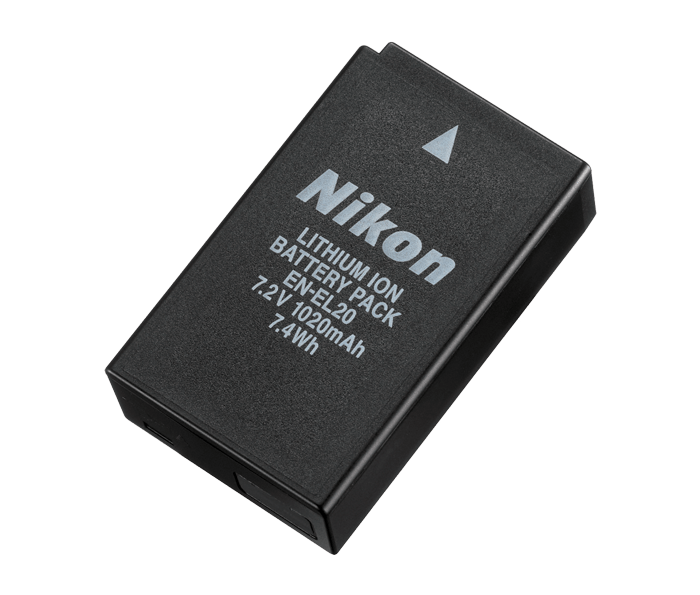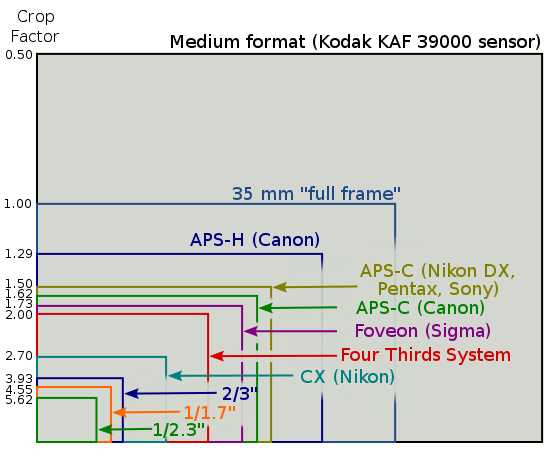I thought it would be useful to take a look
at some of the accessories that will be needed to make the camera ready to shoot.

First off batteries: When the camera was first announced many
of us were extremely happy to see that Blackmagic implemented a removable,
rechargeable battery. Better yet this battery was inexpensive, reliable and something you can pick up at any camera store. Blackmagic decided to
go with Nikon’s EN-EL20 battery. They have there own version of this battery
but most people will go with the cheaper Nikon EN-EL20. There is of
course off brand versions of this battery available as well, in some cases for
a cheaper price. As always make sure you choose a company that has been well
reviewed when choosing off brand batteries.

Here is a link where you can purchase one of these
batteries: EN-EL20
Blackmagic is claiming that you will get one hour of
continuous recording time. Charging time will be around 1 hour and 15 minutes
when the camera is off and approximately 2 hours when in use. This a welcomed
improvement over the 2.5K BMCC which had a not removable built in battery with
lousy operating times. .
Media:
The Pocket Camera will take standard SDHC and SDXC cards. This is fantastic but it’s important to keep in mind that you will need fast cards as the
camera will be recording to Apple ProRes 200mbps HQ 422 (RAW capability promised in a future firmware update). Blackmagic recommends
class 10 cards at 45Mbps or 95Mbps. Even for ProRes I would recommend going with the 95Mbps cards and
when RAW comes to the camera forsure going with the higher cards will be a
necessity. Blackmagic on their site is claiming record times of 37 minutes to 64GB
cards at 24fps. In the coming weeks I will be able to do some proper record
time testing to different cards and see how accurate that number is. Also we
don’t know yet if they will allow you to record at lower levels of ProRes. For
example ProRes 422 or ProRes Lite. If it is anything like the BMCC we may be
stuck at 220mbps HQ 422, which is fine by me.

One thing when choosing cards. I recommend with going with a
well known trusted brand like SanDisk or Panasonic for example. The reason I
feel strongly about this is because some cheaper brands will often claim higher
write speeds than their cards actually preform at. Also quality from card to
card may vary when going with some discount brand cards. With the codec being
used by the Pocket Camera it will be important to have good cards you can count
on to keep up with the data stream being recorded.
Audio:
The Pocket Camera has one built in stereo microphone. This
mic will be good for little else most likely then recording reference sound for
syncing your secondary sound recording in post. Most people will use an additional mic or
interface. The camera does have one mic input which consists of a 3.5mm mini
jack input. Now if the BMCC camera is anything to go by, don’t expect amazing
things out of the
pre-amp in the Pocket Camera. The signal to noise ratio was
quite horrendous on the BMCC. In this case you will need a decent interface
with high quality pre-amps to get your audio into the camera if you are not
recording sound separately. I recommend the Tascam DR-60D interface as a good solution.

Benefits of using the DR-60D recorder.
- The Pocket Camera can be attached to the top of
DR-60D via a standard ¼ thread.
-
Two XLR inputs can be fed into the unit. These
inputs also provide phantom power for mics which need it.
-
It uses standard SD cards to record to, which
you will already have since it is the same media the camera takes.
-
The DR-60D will last about 3 hours on 4 double
AA batteries.
-
It has the capability of also being a 4 track
recorder.
-
Broadcast WAV coded
-
Built in slate feature which will send a tone to
the camera and the card for easy syncing in post when lining up waveforms.
This is only one of many interfaces/pre-amps available. Also
checkout some of the great solutions from JuicedLink They have a number of
different devices that will help you record great audio.
Lenses:
By far this will be the biggest and probably the most
important topic covered in this post. The Pocket Camera uses a Micro Four
Thirds mount to interface with it’s lenses. This mount offers some unique
advantages when it comes to lens selection. The main one being that MFT mount
can be adapted to almost any lens. Nikon, Canon, PL Mount and even C-Mount all can
be utilized with the correct adaptor. Many people who are heavly invested in
Canon and Nikon glass can still use their lenses on the Pocket Camera.
First off lets take a look at the large selection of Micro
Third Lenses available out there. These lenses have typically been cheaper in
the past and offer some unique focal lengths, T and F stop choices that will
really come in handy when shooting with the Pocket Camera. Let’s take a look at
some of the most popular ones.
Panasonic Lumix Lenses: Pansonic MFT lenses offer great
value for someone looking to start out with some inexpensive glass and get
shooting. However their lenses aren’t the fastest out there they have a large
selection of zooms and some decent primes as well. Check out the link below for
their full line up.

Olympus: Another good choice for inexpensive MFT lenses.
They have some nice wide zooms to choose from as well as some decent primes.
They are always easily attainable from most photography stores. Link

Samyang and Rokinon: These two lines of lenses from the same company have some interesting choices for fast cheap MFT primes
at some wide focal lengths that will really benefit the Pocket Camera. One
thing to look out for is quality from lens to lens, make not be the same
consistency you would expect from companies like Nikon and Canon. Link

SLR Magic: The latest super star to hit the inexpensive, fast, super sharp lens market. This company has been making waves lately
with their crazy fast primes. Some MFT
lenses boast T stops of 0.95! These lenses are also know for being very sharp
and really inexpensiv. Great value. However build quality has
been an issue with some of their lenses in the past. Link

Voigtlaender: This German company has become synonyms with
great optics and great build quality. Despite having only a small selection of MFT primes, they
are a company I would check out. They also have released an adapter for MFT
bodies to use their wide range of VM mount lenses. These lenses are great, check out some of the reviews online. However they don’t come cheap. Link

So those are only a few of the Micro Four Third mount lenses
available. However if you are invested in other lenses like Canon, Nikon or
even PL. well you are only just an adapter away from being able to use your
glass on the Pocket Camera.
Here is a list of some of the more popular adapters out
there for you to use to attach your favorite glass.
For those using Nikon. Novoflex has a great adapter here
with a built in aperture ring. Link
For those using Canon Redrock Micro has an adapter for MFT
bodies. Link
Here is a great PL Mount by 16x9 that’s built like a tank. Link
Other lens consideration:
One of the most important things to keep in mind when
selecting lenses for the Pocket Camera is the crop factor of this camera. The magnification is about 2.7 times. This is important because when trying to go wide or calculating depth of field your
choices of lenses will be much different. These two charts below will
illustrate the differences compared to other popular sensors and crop factors.


So you can easily see how when estimating field of view in
the Pocket Camera you will have to choose a wider lens to achieve similar
results as you would with an APS-C or a full frame sensor.
Below is a great field of view calculator from Abelcine.
This will help you to compare how images will look using the Blackmagic
compared to other cameras like the 5D Mark 3 when comparing the crop factor and field of view.
The Metabones Speedbooster: The Blackmagic Pocket’s new best
friend. A while back I did post about this incredible adapter from Metabones
called the Speed Booster. Here is the link for those who are newto this blog or
curious regarding what the Speed Booster is all about. http://videoandaudiogear.blogspot.ca/2013/02/the-speed-booster-by-metabones-and-why.html
The Speed Booster will benefit the Pocket Camera in a couple
of different ways.
First and for-most: The massive crop factor in the Pocket
Camera will be less of an issue as the Speed Booster will make any lens’s field
of view automatically wider.

Secondly the Speed Booster automatically increases the
amount of light coming into the lens, helping the camera in low light
situations. If the 2.5K BMCC is anything to go by it will not be a super star in lowlight compared to camera’s like the Sony FS100 and Canon C300.
Here is a link where you can check the Speed Booster and
learn more about this great little adapter that will you instantly double the
focal length and F stop range of all your lenses in your kit. Link
Shoulder Supports/Rigs/Stabilizers
The Black Magic Pocket Camera is tiny, really tiny. It is
about the same size a consumer point & shoot camera. Only slightly bigger
than your smart phone and it weighs next to nothing. This can be a great thing
but also a huge pain when shooting handheld. Because of the CMOS sensor in this
camera there will be rolling shutter issues. How bad? Well that remains to be
seen. If it is indeed the same sensor that is in the 2.5K BMCC then it is
fairly prevalent. What is rolling shutter or the so called
“Jello Effect” Check out the link for a full explanation of
the what rolling shutter is below.
In the meantime how do you combat it? While you can combat
rolling shutter in a couple of different ways:

-Point of contact. Giving your camera a point of contact
with your body will help stabilize and minimize rolling shutter. For example a
shoulder brace or even having a Loupe or viewfinder will help to stabilize it as it will be pressing against you.
-Weighing it down. The heavier the camera is the smoother it
will be when it moves. Adding weight your camera will force you to move
slower and keep the camera more steady when panning. This could be with counter weights or even something a V mount battery.
-Pan speed. All CMOS sensors by their design will suffer
from rolling shutter to some extent. Some better than others, nice slow pans
will help show less rolling shutters than fast whip pans.
Most standard 15mm rail shoulder mount systems will be
easily adapted to the Pocket Camera. However here are couple examples of some
dedicated rigs designed specifically for the Pocket Camera.
Shape, a Canadian company has a great little rig here: Link

Wooden Camera has a cool system here you should check out: Link
As the cameras get in the hands of more and more
shooters you will see more creative rigs pop up. In the mean time the above are
just some suggestions as to what is available for the camera.
So hopefully this info was of some use to you. I will be updating
this post as I find more a great accessories for the Blackmagic Pocket Camera.
No comments:
Post a Comment